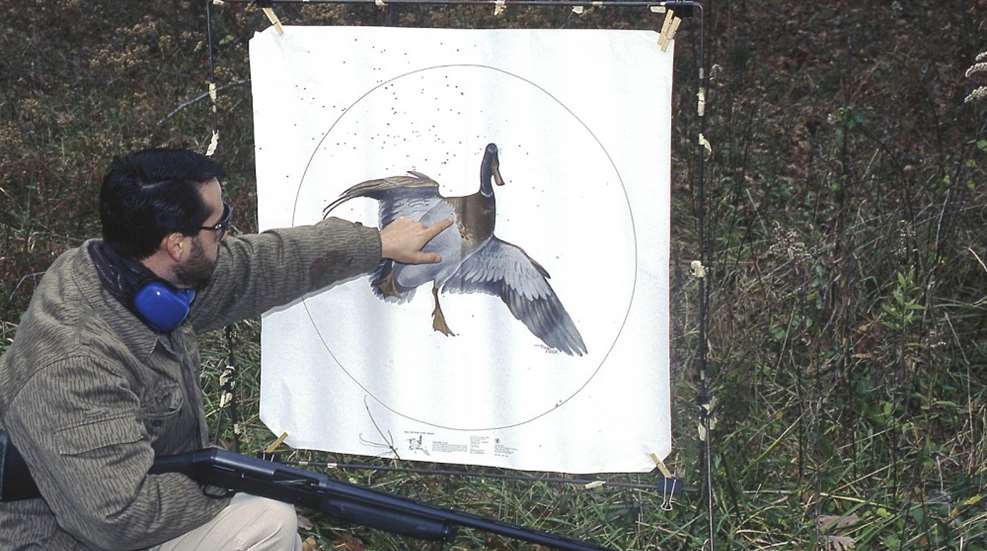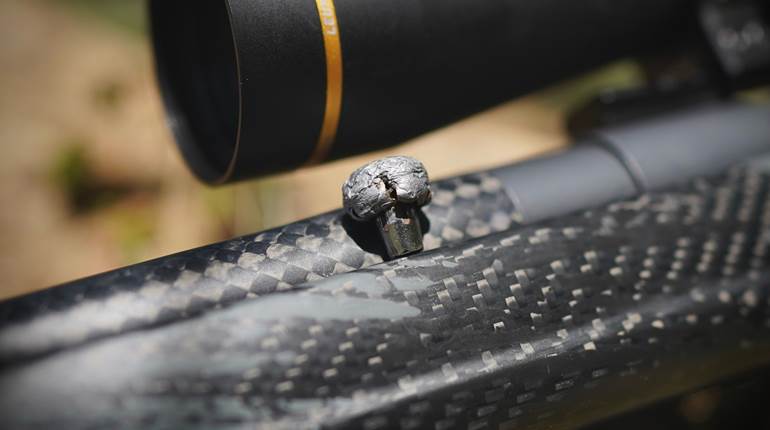
News from Winchester Ammo of an expansion in their TrAAcker shotshell line served as a reminder that it’s time to get out my shotguns for pre-season patterning. As reported here at AmericanRifleman.org, last year’s initial release of TrAAckers was limited to 12-gauge, 2-3/4” No. 8s. Later this year, the line will also include No. 7½s in both 12- and 20-gauge. TrAAckers were a big hit with budding and veteran shotgunners alike looking for a tool to help them master lead. The key component-a visible, pellet-weighted wad that flies true to the shot string-makes it easy for coaches and many shooters themselves to see where the pattern is flying in relation to the bird or clay.
Equally useful in understanding your shot patterns is a session at the pattern board. Some shooters use a metal plate (repainted between shots) but far more common is to hang sheets of cardboard or plain brown craft paper at least 30” wide at an operative distance. Of course this must be done only where it is safe to fire a shotgun.
Patterning is a common late-winter activity as clays competitors prepare for the tournament trail, and turkey hunters make it the first rite of spring gobbler season. A handful of shots for record reveal where the pellets are hitting relative to a sighting mark applied with spray paint or felt-tip marker, and also clearly show pattern density at whatever distance the target is placed.
At American Rifleman, patterning has typically been done at 25 yards for skeet and sporting clays guns and loads, roughly about where those targets are struck. For trap and field guns that must perform at longer ranges, the patterning standard is 40 yards. While some gunners will aim deliberately, others prefer to simulate actual shots by snapping the gun to the shoulder and cheek and then firing as soon as a good sight picture is acquired. With the proof on the board they can quickly note errant tendencies, which can usually be corrected via gun modification, changing sighting beads or perhaps in reviewing the shooter’s grip, mount or stance.
When Rifleman editors test a shotgun we actually count all the pellet holes present in a 30” outer circle and a 21.5” inner split into quadrants. This tedious chore quantifies pattern tendencies that can affect the gun’s ability to hit on target and thus provides an objective means of comparing different guns. But one doesn’t need to go to the trouble, since patterning characteristics can easily be observed without all that counting. If your patterns aren’t evenly distributed around the mark, then your shooting gear is working against you, and some sort of fix is in order.
Later this week in Part 2, we’ll take a look at the somewhat different task of patterning a turkey gun.





































